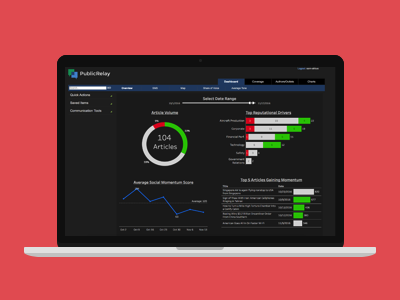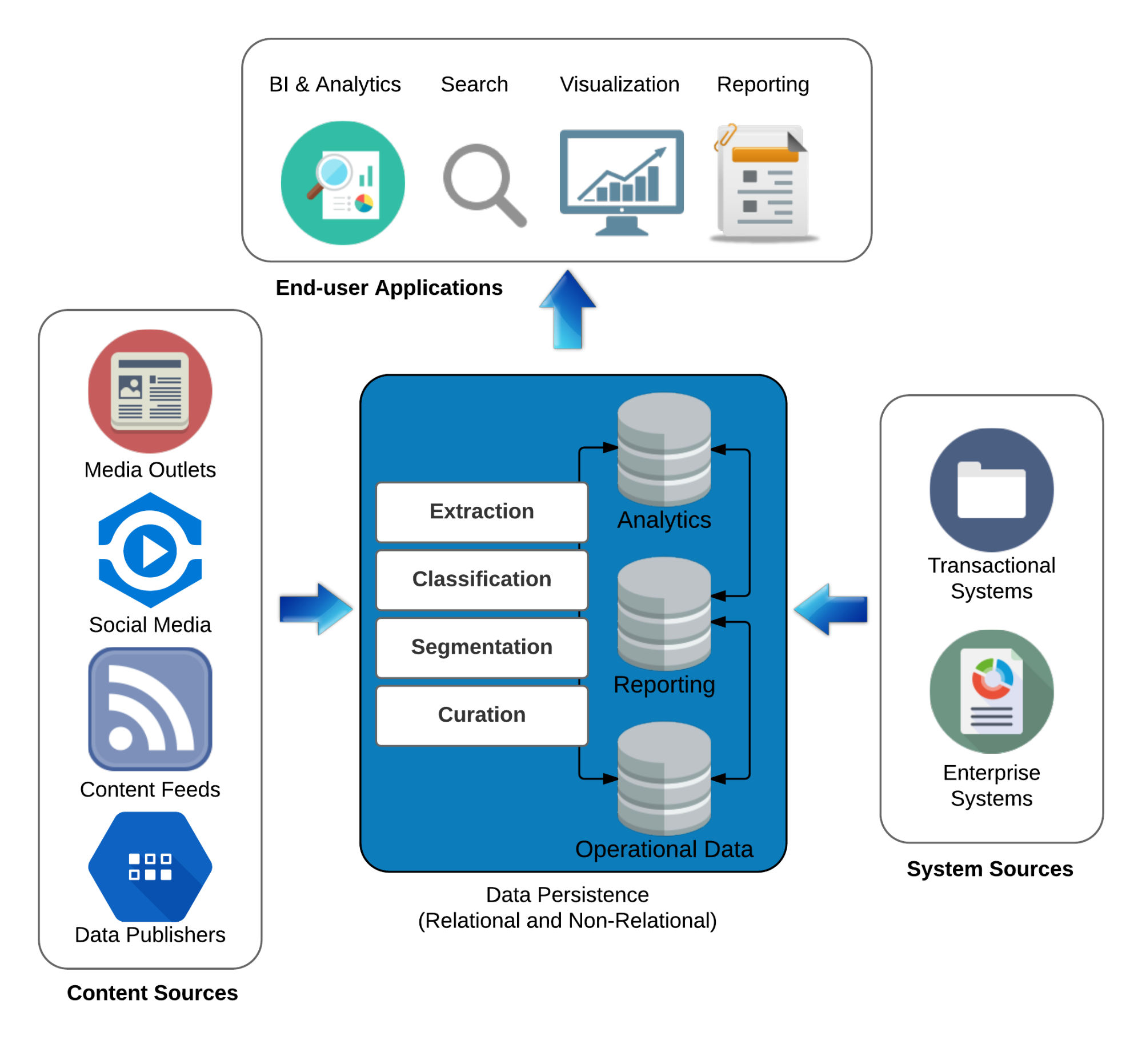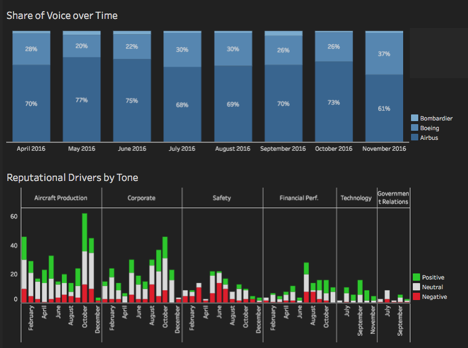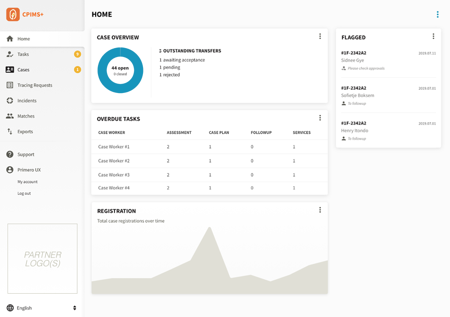In today’s data-driven world, having the tools to leverage vast quantities of information to make smarter decisions has never been so important. Quoin has the real-world experience to apply these practices so that your organization too can harness and translate ‘Big Data’ into meaningful insights. From architecture to implementation, we excel at building systems that support the aggregation, analysis, and visualization of data that drive informed action.

Experienced
Our technologists have delivered sophisticated analytics applications in media, publishing, media monitoring, retail, health insurance, and other sectors
Adaptive
Our engineering know-how enables Quoin to select the technologies and design a solution that is right for a particular client and project
Innovative
We thrive on problem-solving and technical challenges such as aggregation, statistical analysis, machine learning, and visualization
Powerful
Quoin has built applications that can sift through staggering amounts of data and identify patterns for predicting viral content, recognizing fraudulent transactions, and more
QUOIN understands that there is no one-size-fits-all solution for data analytics and visualization. Organizations with large, diverse sources of data often require custom back-end solutions, employing Big Data technologies and advanced machine learning techniques to process and transform data in an adaptive manner.
That said, we base many of our client projects on a proven architecture for big data, as illustrated in the generalized reference image below. This architecture consists of core data management, content/data sources, and end-user applications that access the analytics. We discuss these three components in more detail in the following sections.

Core Data Management
Enterprise systems typically include operational, reporting, and analytics data. Each type of data has specific system dependencies and relevant technologies. Although a big data project would use non-relational data stores such as Hadoop, operational and reporting databases will often use conventional, relational technologies. This hybrid of relational and non-relational technologies is required to support both legacy systems and disparate types of data.
Content & Data Sources
Content and data sources could include traditional media outlets, social media platforms (e.g., Twitter), specialized content feeds, and data publishers. System sources are usually external to an organization and its enterprise systems. The data and content is ingested by the system, supported by complex transformation rules and processes. System sources include the range of transactional and other enterprise systems and are typically existing applications built on operational databases.
End-user Applications
The aggregated content is then subject to analysis, using one or more techniques, categorized as:
- Extraction
- Classification
- Segmentation
- Curation
This figure displays a visualization for the Share of Voice over Time metric for an aircraft manufacturer (i.e. the number of times this manufacturer is mentioned in news articles, blogs, social media posts, and other online content versus its competitors). The time-series graphic shows both Share of Voice and key topics, or ‘Reputational Drivers’ with a positive, neutral, or negative tone.

As a case management platform, Primero tracks a number of important metrics – date opened, resolution, date closed, caseload, and others. These metrics help to inform and improve the delivery of services to at-risk children and their families. In this image, we show the main dashboard for a case manager.

Back-End:
Designing an application to analyze information and visualize insights from multiple large, heterogeneous datasets involves a number of challenges.
- Storage and Indexing – Quoin designs and implements Big Data applications using the Apache Hadoop family of technologies (e.g., HBase, Hive, Parquet, ORC). This set of products facilitates scaling to additional servers as data accumulates
- Extract, Transform, Load (ETL) – Quoin’s business analysts work with clients to map out and codify complex sets of business rules for data processing, in order to transform diverse datasets into an ideal format for analysis. Our engineers then implement the ruleset using either batch (e.g. Apache Spark) or real-time (e.g. Apache Storm) computing frameworks
- Dynamic Analytics – Quoin’s engineers use advanced techniques such as machine learning and natural language processing to provide predictive analytics on client-chosen indicators, such as the likely relevance of content to a reader or public reaction to a news item
- Scalability – Quoin designs application architectures that accommodate both vertical and horizontal scaling. We use clustered servers to ensure that our applications can quickly respond to spikes in demand without increased load times for users. We also automate our deployments using Docker and Ansible to facilitate scaling to new environments.
Front-End:
Turning data into actionable insights requires a cogent presentation. Quoin leverages our extensive experience designing and implementing data visualizations (graphs, maps, etc.) that are attractive, accurate, and meaningful to an end-user
Quoin uses a number of JavaScript-based frameworks to build rich, immersive analytics interfaces. In particular, our developers have extensive experience using Angular JS and the React/Redux front-end stack. Both these frameworks render the UI on the user’s browser rather than the back end, meaning that increased site usage has minimum impact on server load.
These front-end frameworks facilitate highly responsive and dynamic pages which allow the user to explore new information and aspects of the site without page reloads and with minimum time lost to server responses. In combination with the above frameworks, our designers and engineers have employed a number of open source libraries for creating clean, dynamic analytics interfaces:
- D3.js – Industry-standard JavaScript library which renders interactive graphs, charts, and maps.
- Plotly.js – Extension of D3.js which offers more than 25 responsive, exportable charts - including most commonly used statistical types such as tables, bar graphs, scatter plots, and heat maps, as well as geographic charts like choropleths and scatter maps.
- HighCharts – Plug-and-play alternative to the D3/Plotly stack, which offers the ability to quickly render data in a set of standard chart types, in opposition to D3’s high allowance for customization.
- SemanticUI – A set of JavaScript and CSS libraries that provide developers with a versatile vocabulary and framework for the development of responsive interfaces, and integrates easily with the React.JS framework.

